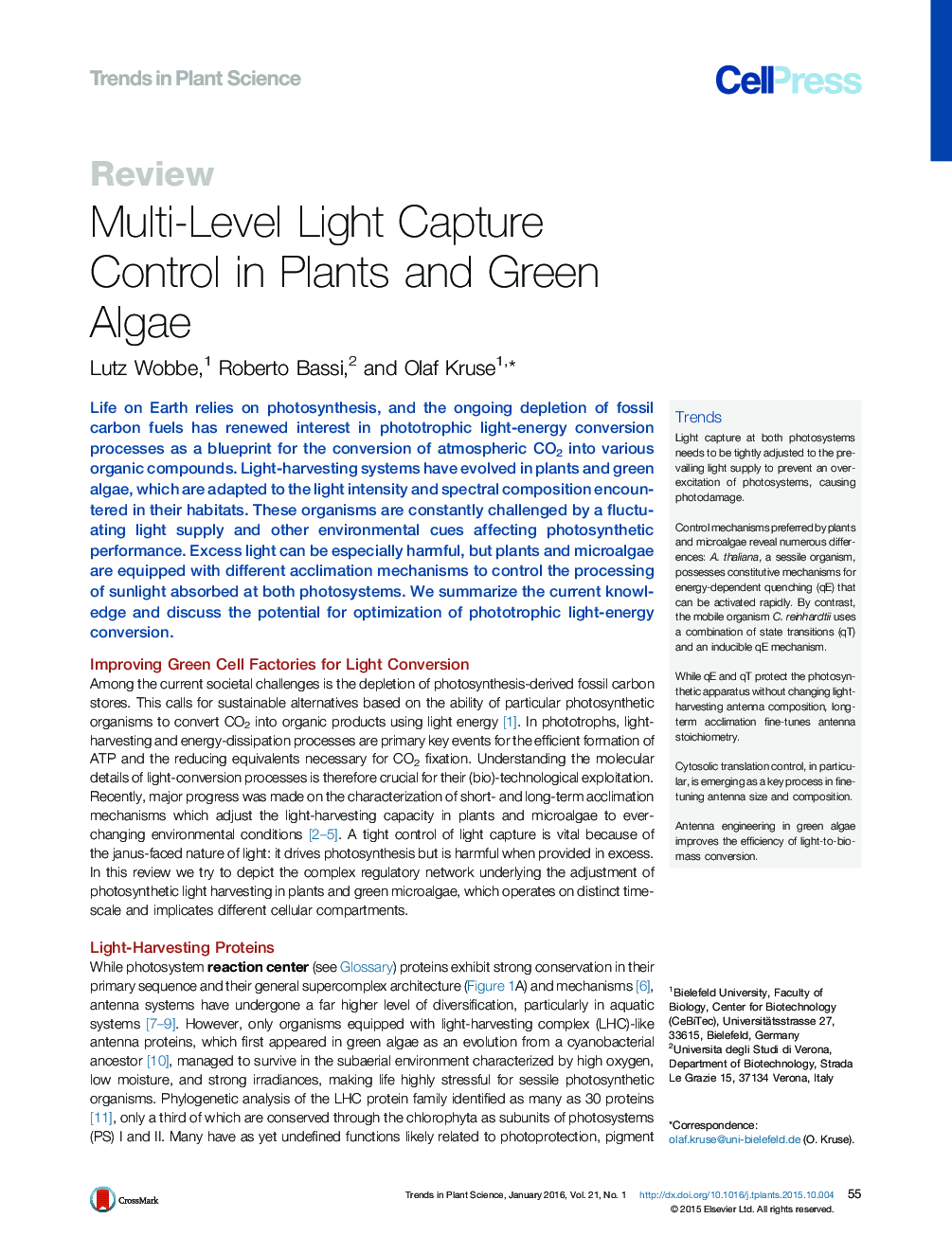| Article ID | Journal | Published Year | Pages | File Type |
|---|---|---|---|---|
| 2825736 | Trends in Plant Science | 2016 | 14 Pages |
Life on Earth relies on photosynthesis, and the ongoing depletion of fossil carbon fuels has renewed interest in phototrophic light-energy conversion processes as a blueprint for the conversion of atmospheric CO2 into various organic compounds. Light-harvesting systems have evolved in plants and green algae, which are adapted to the light intensity and spectral composition encountered in their habitats. These organisms are constantly challenged by a fluctuating light supply and other environmental cues affecting photosynthetic performance. Excess light can be especially harmful, but plants and microalgae are equipped with different acclimation mechanisms to control the processing of sunlight absorbed at both photosystems. We summarize the current knowledge and discuss the potential for optimization of phototrophic light-energy conversion.
TrendsLight capture at both photosystems needs to be tightly adjusted to the prevailing light supply to prevent an overexcitation of photosystems, causing photodamage.Control mechanisms preferred by plants and microalgae reveal numerous differences: A. thaliana, a sessile organism, possesses constitutive mechanisms for energy-dependent quenching (qE) that can be activated rapidly. By contrast, the mobile organism C. reinhardtii uses a combination of state transitions (qT) and an inducible qE mechanism.While qE and qT protect the photosynthetic apparatus without changing light-harvesting antenna composition, long-term acclimation fine-tunes antenna stoichiometry.Cytosolic translation control, in particular, is emerging as a key process in fine-tuning antenna size and composition.Antenna engineering in green algae improves the efficiency of light-to-biomass conversion.
